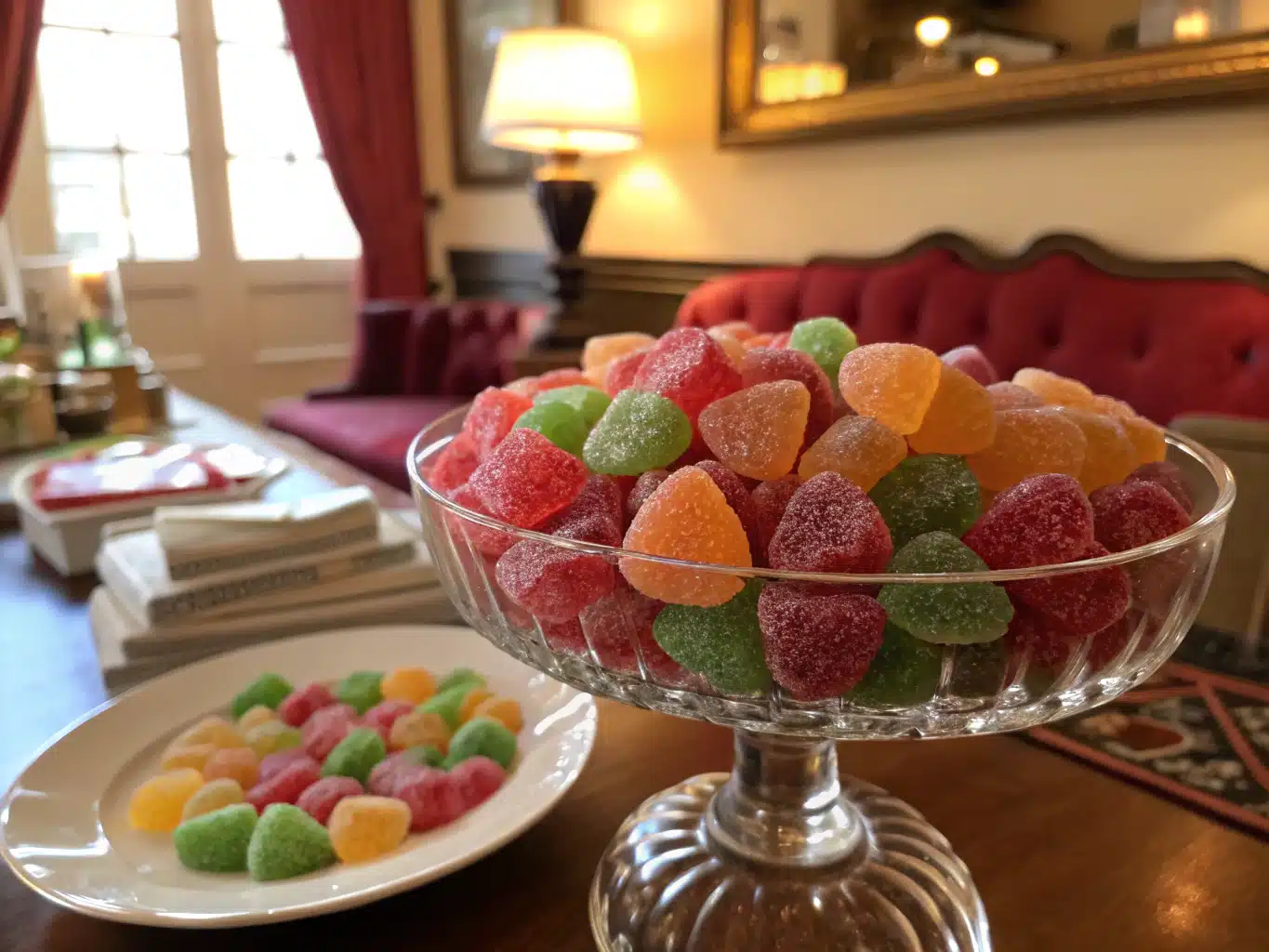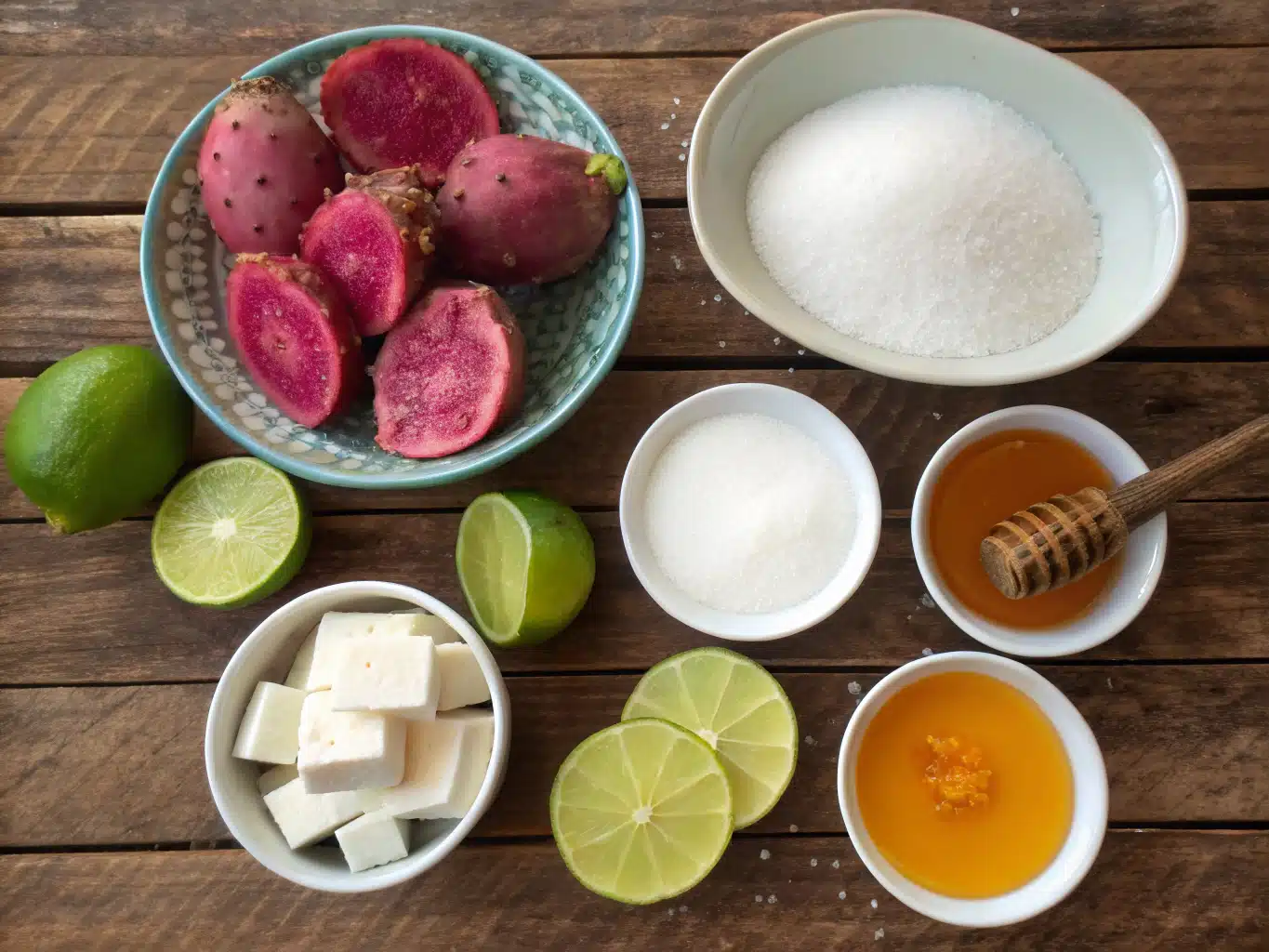
Table of Contents
If you’re craving something bold yet naturally sweet, prickly pear candy should be on your radar. This candy, made from the vibrant magenta fruit of the prickly pear cactus, blends tradition with curiosity in a flavor that’s both nostalgic and adventurous.
As a plant-based chef living in Portland, I find deep joy in nature-inspired treats. Years ago, during a summer visit to the Sonoran Desert, I had my first bite of homemade prickly pear candy. It was tucked in a mom-and-pop roadside market near Tucson—bright pink, slightly chewy, and bursting with flavors I couldn’t quite place: watermelon, raspberry, and something uniquely cactus. It instantly transported me to sunbaked mornings, quiet kitchen experiments, and the backyard gardens of my childhood.
In today’s article, we’ll dive into the origins and essence of prickly pear candy, share a step-by-step homemade recipe, explore health benefits, and answer all your burning questions.
The Heart of the Flavor: Why Prickly Pear Candy Matters
What is Prickly Pear Candy, Exactly?
Prickly pear candy is made from the juice or pulp of the prickly pear fruit—also known as “tuna” in Mexican cuisine. The fruit grows on the nopales cactus and boasts a naturally sweet profile with subtle tanginess. Unlike artificially flavored candies, prickly pear candy captures nature’s vibrancy.
There’s something magical about crafting candy from such an ancient fruit. Historically cherished by Native American communities for its rich flavor and healing qualities, today prickly pear flourishes as a botanical treat in homespun kitchens and artisan markets. It pairs beautifully with prickly pear lemonade on hot days or alongside prickly pear preserves for gift-worthy bundles.
Homemade versions often omit artificial additives, relying on boiled down juice, organic sugar, and pectin, resulting in a treat that’s both beautiful and better for you. And yes, the color? That eye-catching fuchsia hue? All natural.
Why This Wild Fruit Works as Candy
One reason prickly pear works so well in candy is its naturally high sugar content balanced by earthy undertones. That’s why you’ll also find it in prickly pear jam or prickly pear jelly. When gently simmered, it forms a syrupy base bursting with antioxidants, vitamin C, and betalains—the same pigments found in beets and dragonfruit.
Another reason? It transforms mundane candy-making into an art form. You’re not just melting sugar—you’re bottling sunshine, resilience, and centuries of foraging wisdom. It’s a conversation-starter, a memory-maker, and most importantly, a lip-smacking delight that respects the plant-based lifestyle.
Making Prickly Pear Candy at Home: Simple, Fun & Natural
Ingredients List: What You’ll Need

To keep things simple and approachable, we’re using a basic jelly candy method. Here’s what you’ll need (all vegan-friendly):
| Ingredient | Note / Substitution |
|---|---|
| 2 cups prickly pear juice | Use fresh or prickly pear cactus syrup diluted slightly |
| 1 tbsp lemon juice | Boosts the tartness |
| 3 cups organic cane sugar | Granulated works best |
| 1 box fruit pectin | Such as Sure-Jell (vegan-friendly) |
Optional: Add a dash of vanilla or cayenne to give it an unexpected flair!
Timing: Prep, Cook, Chill
Homemade prickly pear candy doesn’t take all day—though it tastes like you spent hours on it.
- Prep Time: 10 minutes
- Cooking Time: 45 minutes
- Chill and Set Time: 4–6 hours
That’s under 6 hours total, which is about 20% faster than traditional fruit-paste candies or gummies that need overnight curing.
Step-by-Step Instructions
- Strain your prickly pear pulp to remove hard seeds and peel. If using whole fruit, peel carefully and blend until smooth, then strain.
- In a heavy-bottomed saucepan, combine prickly pear juice, lemon juice, and pectin. Stir continuously over medium heat.
- Once well combined, slowly add the sugar and bring the mixture to a rolling boil.
- Continue boiling for 5 more minutes, stirring occasionally so the mixture doesn’t scorch.
- Pour the hot candy base into a parchment-lined baking sheet or silicone candy molds.
- Cool at room temperature for 4–6 hours, or until firm.
- Once set, slice into cubes and toss with sugar to prevent sticking.
- Store in an airtight container at room temperature for up to two weeks.
Pro tip: Line your molds with citrus-scented sugar for a zesty contrast, or serve them alongside Mexican prickly pear recipes for authentic flair.
Why Prickly Pear Is a Healthier Candy Option
Nutritional Benefits of Prickly Pear
Unlike conventional candy, prickly pear treats can deliver functional benefits. The fruit is rich in vitamin C, magnesium, and fiber. It’s particularly noted for its high levels of betalains—powerful antioxidants that support cellular recovery and reduce inflammation.
According to the National Institutes of Health, betalains may also play a role in improving metabolic health. That means your sweet tooth doesn’t have to compromise your values or wellbeing when you choose plant-derived candies — see NIH details on betalains and metabolic benefits here.
Plus, making it yourself means full control over the ingredients—no high-fructose corn syrup, food dyes, or gelatin required.
Sustainability: Cactus as the Future Crop
Another benefit? Sustainability. The prickly pear cactus thrives on minimal water. Compared to water-intensive crops like sugar cane, this makes it a more ecological option. Many chefs and farmers are turning to cacti as climate-resilient ingredients for desert farming.
Even the byproducts of candy-making—like the leftover skin and pulp—can be composted or repurposed into nourishing prickly pear juice, making it a zero-waste project if you plan smart.
How to Customize, Store, and Pair Prickly Pear Candy
Fun Flavor Pairings & Add-ins
Want to level up your prickly pear candy game? Try these natural twists:
- Mint or lime zest for a refreshing kick
- Hibiscus petals for floral tang
- Chili-lime powder sprinkled on top for bold Mexican flair
This sweet treat also pairs wonderfully with prickly pear jelly on a vegan charcuterie board or stirred into warm oatmeal for a fruity twist.
Customization turns the experience from recipe-following into a hands-on art form. No two batches are alike, and that’s the beauty.
Proper Storage & Gifting Tips
Once cooled and dusted with sugar, store your candies in a glass jar with a tight-fitting lid. Keep them out of direct sunlight and in a cool spot to retain their soft chew.
For gifting, wrap batches in parchment sheets and tie with twine. Add a handwritten tag, and you’ve got a charming plant-based holiday present or housewarming gesture.
If making large batches, you can vacuum-seal and freeze them for up to three months. The flavor holds well, but be sure to let them thaw slowly in the fridge before serving to prevent condensation.
Frequently Asked Questions
How do you make prickly pear candy?
Making prickly pear candy involves reducing prickly pear juice with sugar and pectin, then setting it in molds or sheets. Chill for several hours, cut into cubes, and optionally dust with sugar.
What does prickly pear candy taste like?
It has a naturally sweet flavor with notes of watermelon, bubblegum, and raspberry. Some describe it as subtly floral with a slight earthy undertone.
Can you use fresh prickly pear fruit for candy?
Yes, fresh prickly pear is ideal! Remove the skin and seeds before blending the pulp into juice. You’ll get the best color and flavor from fresh fruit.
Where can I buy prickly pear candy?
You can find prickly pear candy at Southwest specialty stores or online retailers. Many markets in Arizona and New Mexico carry locally made versions.
Conclusion
Prickly pear candy isn’t just another sweet—it’s an edible story of resilience, flavor, and sustainability. Whether you remember it from family road trips or are just discovering the cactus fruit for the first time, there’s something deeply satisfying about transforming such a wild, bold fruit into something bite-sized and beautiful.
Making it yourself opens the door to endless variations, allowing you to tailor flavor, texture, and sweetness to your values and taste. From cactus syrup to prickly pear jam, it’s one of the most exciting ingredients in modern plant-based kitchens—and now, it’s part of your candy bowl, too.
So go ahead: get a little sticky, make a little magic, and let the desert fruit brighten your day.
Print
Prickly Pear Candy: A Sweet Taste of the Desert
- Total Time: 6 hours
- Yield: One 9x9 pan of candy or ~40 cubes 1x
- Diet: Vegan
Description
A vibrant, naturally sweet candy made from prickly pear fruit—this recipe is simple, plant-based, and packed with bold, nostalgic flavor.
Ingredients
2 cups prickly pear juice (fresh or diluted syrup)
1 tbsp lemon juice
3 cups organic cane sugar
1 box fruit pectin (e.g., Sure-Jell, vegan-friendly)
Optional: Dash of vanilla or cayenne
Instructions
1. Strain your prickly pear pulp to remove seeds and peel. If using whole fruit, peel and blend until smooth, then strain.
2. In a heavy-bottomed saucepan, combine prickly pear juice, lemon juice, and pectin. Stir continuously over medium heat.
3. Slowly add sugar and bring to a rolling boil.
4. Continue boiling for 5 more minutes, stirring occasionally to avoid scorching.
5. Pour mixture into a parchment-lined baking sheet or silicone molds.
6. Cool at room temperature for 4–6 hours until firm.
7. Slice into cubes and toss with sugar to prevent sticking.
8. Store in an airtight container for up to two weeks.
Notes
Use citrus sugar to line molds for a zesty contrast.
Try chili-lime, hibiscus, or mint add-ins for flavor variety.
Wrap in parchment and twine for gift-giving.
Freeze large batches for up to 3 months.
- Prep Time: 10 minutes
- Cook Time: 45 minutes
- Category: Dessert
- Method: Boiled
- Cuisine: Southwestern
Nutrition
- Serving Size: 2–3 pieces
- Calories: 70
- Sugar: 12g
- Sodium: 1mg
- Fat: 0g
- Saturated Fat: 0g
- Unsaturated Fat: 0g
- Trans Fat: 0g
- Carbohydrates: 17g
- Fiber: 1g
- Protein: 0g
- Cholesterol: 0mg
Keywords: prickly pear, vegan candy, cactus candy, natural sweets
